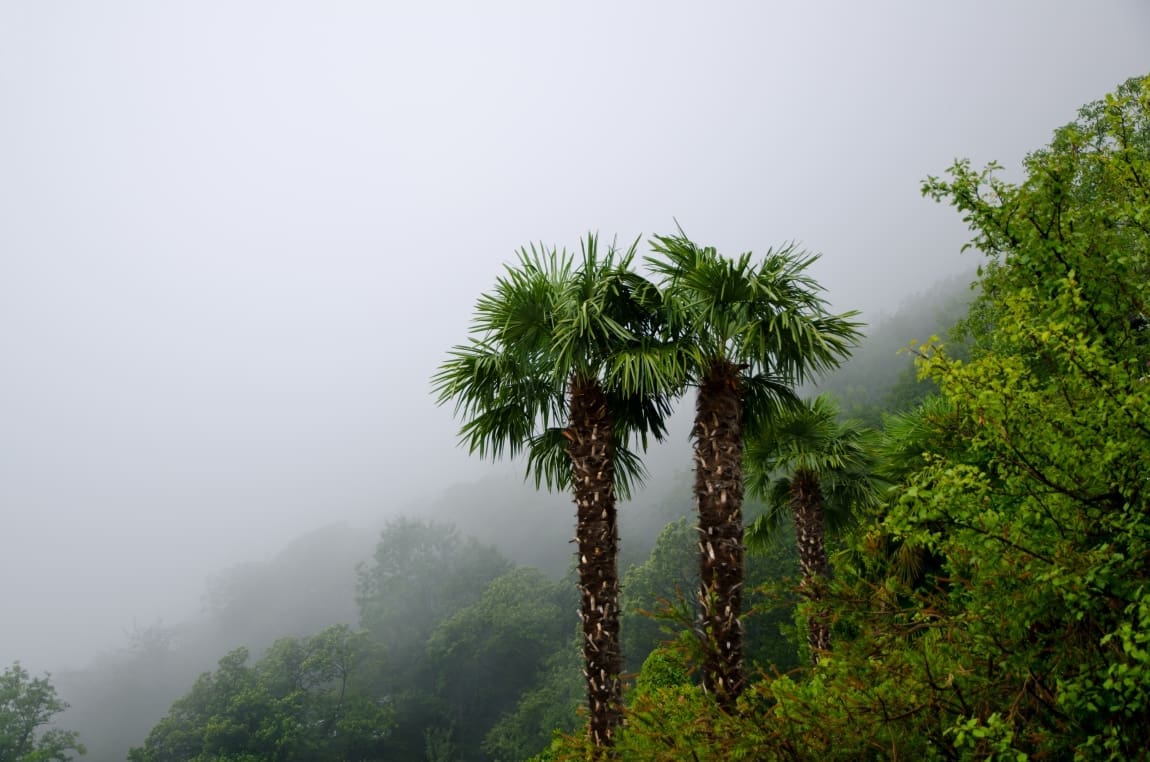By David Danelski | University of California – Riverside
A study led by a UC Riverside atmospheric scientist predicts that unchecked carbon emissions will force tropical rains to shift northward in the coming decades, which would profoundly impact agriculture and economies near the Earth’s equator.
The northward rain shift would be caused by complex changes in the atmosphere spurred by carbon emissions that influence the formation of the intertropical convergence zones. Those zones are essentially atmospheric engines that drive about a third of the world’s precipitation, Liu and his co-authors report in a paper published Friday, June 28, in the journal Nature Climate Change.
Tropical regions on either side the equator, such as central African nations, northern South America, and Pacific island states, among other regions, would be the most affected. Major crops grown in the tropics include coffee, cocoa, palm oil, bananas, sugarcane, tea, mangoes, and pineapples.
However, the northward shift will last for only about 20 years before greater forces stemming from warming southern oceans pull the convergence zones back southward and keep them there for another millennium, said Wei Liu, an associate professor of climate change and sustainability at UCR’s College of Natural and Agricultural Sciences.
Intertropical convergence zones are areas along or near the equator where trade winds from the northern and southern hemispheres meet and shoot upward into the cooler elevations, sucking up great volumes of moisture from the oceans. As this humid air cools at higher elevations, thunderclouds form, allowing for drenching rainstorms. Tropical rainforests can have as much as 14 feet of rain a year.
“The rainfall change is very important,” Liu said. “It’s a very heavy rainfall region. So, a small shift will cause big changes in agriculture and the economy of the societies. It will affect many regions.”
Liu and his colleagues used sophisticated computer models to predict the atmospheric influence of carbon dioxide emissions from continued burning of fossil fuels and other sources, Liu said.

“This climate model included many components of the atmosphere, ocean, sea ice, and land. All these components are interacting with each other,” he said. “Basically, we try to simulate the real world. In the model, we can increase our carbon dioxide emissions from pre-industrial levels to much higher levels.”
The analysis accounted for how carbon emissions influence the amount of radiant energy at the top of atmosphere. It also considered changes in sea ice, water vapor and cloud formation. These and other factors resulted in conditions that push the rain-forming convergence zones northward by as much as 0.2 degrees on average.
The paper’s title is ‘Contrasting fast and slow intertropical convergence zone migrations linked to delayed Southern Ocean warming.’ Its co-authors are Shouwei Li of UCR; Chao Li of the Max Planck Institute for Meteorology, Hamburg, Germany; Maria Rugenstein of Colorado State University, Fort Collins; and Antony P. Thomas of UCR.
More information: Wei Liu, Shouwei Li, Chao Li, Maria Rugenstein & Antony P. Thomas, ‘Contrasting fast and slow intertropical convergence zone migrations linked to delayed Southern Ocean warming.’, Nature Climate Change (2024); DOI: 10.1038/s41558-024-02034-x. UCR Press Release. Featured image credit: wirestock | Freepik




